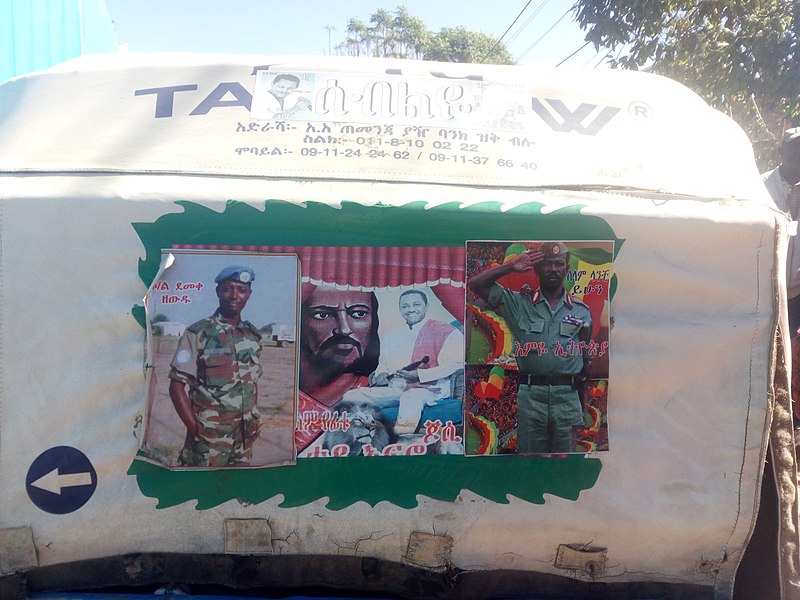LSE’s Sasha Jesperson argues that targeting aid on post-conflict and fragile states at the expense of conflict-free less developed countries will leave the latter struggling to maintain progress.
The security-development nexus has increasingly been used to frame international engagement in post-conflict and fragile states. The enthusiasm behind the nexus is derived from arguments that “there can be no security without development and no development without security”. As such, it invokes a comprehensive approach that merges the two concepts.

Despite the enthusiasm of policymakers and practitioners, scholars have been more sceptical. In particular, numerous critiques have focused on the securitisation of development. For some scholars, security concerns are taking precedence over development, while others are concerned that development co-operation is being used to achieve security in donor countries, whether through traditional development policies or an increased focus on security by development agencies.
In post-conflict and fragile states, development actors are becoming more engaged in what have traditionally been security programmes. For example, DfID led the security sector reform programme in Sierra Leone from 2002. The involvement of development actors in traditional security areas are justified on the basis that it creates the necessary conditions for development. This “security first” approach ensured that the majority of funding to Sierra Leone, at least between 2002 and 2005 was directed to security institutions.
When the Poverty Reduction Strategy (PRS) process began in 2004, the Sierra Leone Office of National Security (ONS) sought to contribute to the consultation, aligning its priorities with the PRS. This can be viewed in two ways. The security sector has the potential to contribute to poverty reduction and consolidate the gains made so far, which was how ONS presented the situation. However, it can also be viewed as a strategy to maintain donor funding within the security sector. One of the primary arguments used to justify their involvement in the PRS process was that government departments that should be involved lacked capacity. While this may be a legitimate concern, the problem arose as the majority of donor funding had been channelled to the security sector. If funding continued to flow to the security sector it would only consolidate this division.
Regular development programmes were also underway during the initial phase of post-conflict reconstruction. UNDP engaged in programmes on recovery and peacebuilding; governance and democracy development; poverty reduction and human development. However, even these programmes had a significant focus on security, particularly through the disarmament, demobilisation and reintegration initiatives. As such, the implementation of the security-development nexus in Sierra Leone prioritised security over development on the assumption that the space to resolve development problems will open up once security has been provided. As a result, both security and development actors prioritised security reforms.
This trend towards security first approaches has continued with the increased emphasis on fragile and conflict-affected states. The International Dialogue on Peacebuilding and Statebuilding has recognised fragility as a barrier to achieving the Millennium Development Goals. Many donor countries have prioritised development assistance to fragile and conflict-affected states. The UK government’s contribution to fragile and conflict-affected states is expected to increase from 22% in 2010 to 30% by 2014-15. As development flows to fragile and conflict-affected states increase, it is inevitable that development assistance to other developing countries will reduce. The 2011 World Development Report noted that “the aid and peacekeeping assistance going to countries after civil conflict ends greatly exceeds what is provided to countries struggling to prevent an escalation of conflict”. Less developed countries with no risk of conflict are likely to experience an even greater reduction in assistance. While middle-income countries will bear the brunt of this reduction, such as through the UK’s withdrawal of assistance from India after 2015, low-income countries will most likely also be affected. As the security-development nexus has refocused development assistance around security interests, the shift raises uncertainty around development flows beyond the post-conflict phase.
This uncertainty is particularly pertinent in Sierra Leone. Following successful elections on 17 November 2012 the UN has regarded the country as moving beyond a post-conflict state to a less developed country. As a result, security actors are planning to withdraw. The UN Peacebuilding Mission, UNIPSIL, has entered a transition phase with full withdrawal expected by 31 March 2014. Following UNIPSIL’s withdrawal, development assistance will continue to flow. DfID estimates that it will spend £68 million per year at least until 2015. While the strategies of many donors end in 2012 or 2013 in line with the Sierra Leonean governments PRSP-II strategy, they are likely to be renewed to support the new PRSP strategy. However, as donor policies on development assistance are increasingly prioritising fragile and conflict affected states, Sierra Leone’s transition from post-conflict to less developed raises questions about the future of development assistance to the country. These concerns have been raised in the UN report outlining the withdrawal of UNIPSIL. The UN Secretary General reemphasised the UN transitional Joint Vision 2013-2014, noting that “the drawdown of UNIPSIL should not be used as justification to reduce aid flows to the country”.
While Sierra Leone is no longer a post-conflict state, many challenges remain. Youth unemployment remains high, with estimates ranging from 50-70%. While maternal mortality has decreased significantly in some parts of the country, it remains high at 890 per 100,000 live births, compared to 8.6 per 100,000 in the UK. Sierra Leone continues to be ranked low on development indices. In 2011 Sierra Leone was ranked 180 out of 187 on the Human Development Index. Currently 19% of Sierra Leone’s Gross National Income (GNI), and an even larger proportion of the national budget is derived from aid. While this is already a significant reduction, from 34.1% GNI in 2004, and 25.7% in 2006, it remains a sizeable contribution. While DfID seeks to reduce the reliance of the government’s budget on aid, some areas of government policy are derived completely from international funding.
The current focus on fragile and conflict-affected states suggests that Sierra Leone’s transition from a post-conflict to less developed country may result in a reduction of development assistance after 2015. Some argue that this is a positive shift that will force the government to take responsibility and make better decisions. However, these arguments overlook the significant achievements made by the government since the war ended. When many of the factors that contributed to the conflict remain, such as high youth unemployment, weak governance and an urban/rural divide, the reduction of development assistance that addresses those areas poses a significant risk.





